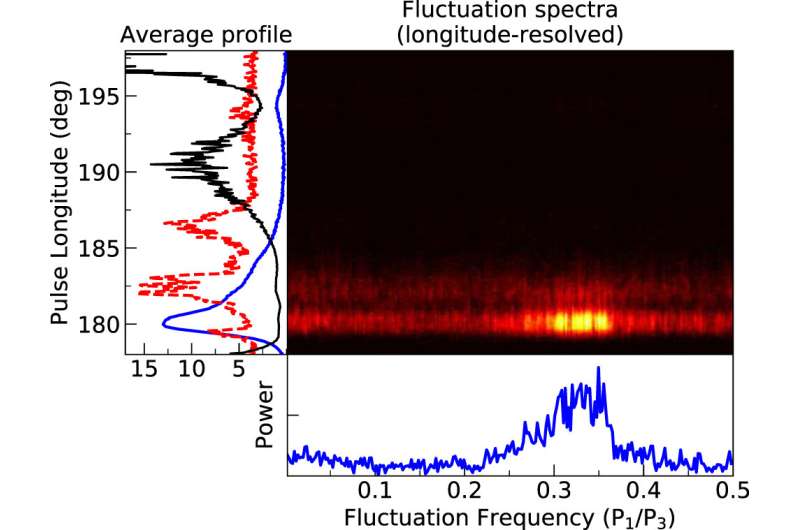Pulse-to-pulse energy distribution and longitude-resolved modulation properties of a FAST-CRAFTS pulsar

The Five-hundred-meter Aperture Spherical Radio Telescope (FAST), the largest telescope ever built by far, has discovered more than 200 pulsars. PSR J1631+1252 is an isolated normal pulsar with a rotational period of 0.310 s discovered by the FAST in the Commensal Radio Astronomy FAST Survey (CRAFTS).
Researchers led by Wen Zhigang from the Xinjiang Astronomical Observatory (XAO) of the Chinese Academy of Sciences (CAS) and their collaborators have investigated the pulse-to-pulse energy distribution and longitude-resolved modulation properties of PSR J1631+1252 at 1250 MHz.
The study was published on April 10 in The Astrophysical Journal.
The researchers found that the representative surface-dipole magnetic field strength was 1.13×1011 G and the spin-down energy loss was 5.34×1031 erg s-1.
"The pulse-to-pulse energy distribution can be well described by a lognormal distribution with approximately constant fitting parameters," said Wen. "The associated pulsar emission mechanism involves only linear processes."
Using the fluctuation spectral analysis, the researchers identified PSR J1631+1252 as a subpulse drifter. The leading component was phase-modulated with a drifting periodicity of 3.28 rotational periods. A bimodal distribution was present in the time interval between successive drift bands, which implied that the pulsar possibly consisted of two different drift patterns.
The results of this research provide more insights into the physics of pulsar emission mechanism and the physical state of pulsar magnetospheres.
More information: Z. G. Wen et al, A Single-pulse Study of the Subpulse Drifter PSR J1631+1252 Discovered at FAST, The Astrophysical Journal (2022). DOI: 10.3847/1538-4357/ac5d5d
Journal information: Astrophysical Journal
Provided by Chinese Academy of Sciences





















